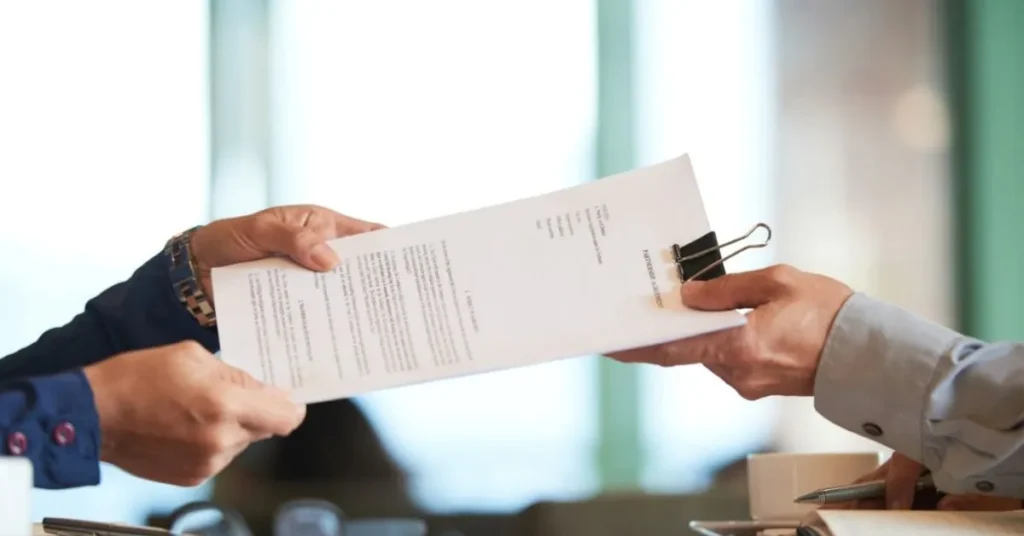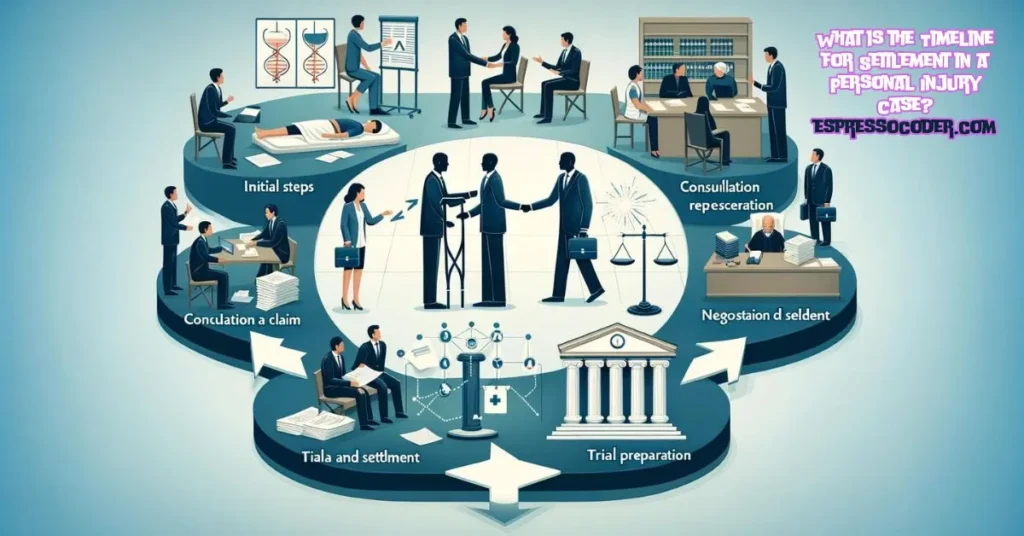
image credits: Image source
Have you been injured due to someone else’s negligence and wondered when you might see compensation? The timeline for settling a personal injury case can vary widely, causing frustration and uncertainty.
This article explores the timeline of a personal injury case, factors that influence settlement times, potential stages a case might go through, and tips to expedite the process.
Diving deeper:
Contents
What is a Personal Injury Case?
Before diving into the timeline, let’s ensure we’re on the same page regarding what constitutes a personal injury case. Simply put, a legal dispute arises when one person suffers harm from an accident or injury, and someone else might be legally responsible for that harm. These cases often involve seeking compensation for medical expenses, lost wages, and pain and suffering.
A qualified attorney will enable you to understand the personal injury settlement process.
The Timeline for Settlement in a Personal Injury Case
Initial Steps
After sustaining an injury, the first step is to seek medical attention. Your health is of paramount importance. Simultaneously, it’s crucial to document the incident. Take photographs, gather witness statements if possible, and keep records of all medical treatments and expenses. These initial steps lay the foundation for your case.
Consultation and Representation
Once your immediate medical needs are addressed, it’s time to seek legal counsel. A personal injury attorney will assess the details of your case during a consultation. If they determine you have a valid claim, they’ll likely agree to represent you on a contingency fee basis, meaning they only get paid if you receive compensation. This arrangement ensures access to legal representation regardless of financial constraints.
Filing a Claim
With legal representation secured, your attorney will file a claim against the party responsible for your injuries, initiating the legal process. The defendant then has a designated timeframe to respond to the claim. During this stage, both parties exchange information relevant to the case through discovery.
Negotiation and Settlement
Following the exchange of information, negotiations commence. Your attorney will contact the defendant’s representatives to reach a fair settlement. This phase often involves back-and-forth discussions to determine the appropriate compensation amount. Settlement offers may fluctuate as new information emerges or circumstances change.
Trial Preparation
The case proceeds to trial if negotiations fail to yield a satisfactory settlement. However, it’s essential to note that most personal injury cases are resolved through settlements. Nevertheless, thorough trial preparation is crucial. Your attorney will gather evidence, identify witnesses, and develop a compelling legal strategy to effectively present your case in court.
Trial and Verdict
Should the case proceed to trial, both parties present their arguments and evidence before a judge or jury. The court then deliberates and renders a verdict. If the verdict favors the plaintiff (the injured party), the defendant must pay the determined compensation amount. However, preparing for the possibility of an appeal is essential, which could prolong the process.
Factors Influencing the Timeline of Settlement in a Personal Injury Case
1. Severity of Injuries: The extent of your injuries significantly influences the settlement timeline. Severe injuries often require extensive medical treatment and rehabilitation, which can prolong the negotiation process as your attorney waits for a clearer picture of your long-term medical needs before settling.
2. Clarity of Fault (Liability): Cases where the fault is clear-cut tend to settle more quickly. However, if there’s a dispute or ambiguity regarding liability, negotiations may stall as both parties seek to establish who is responsible for the accident or injury.
3. Amount of Medical Documentation: The more comprehensive your medical documentation, the smoother the settlement process. Detailed records of your injuries, treatments, and prognosis provide undeniable evidence of your damages, strengthening your negotiating position and potentially expediting the settlement.
4. Insurance Company Involvement and Negotiation Tactics: Insurance companies play a significant role in personal injury settlements. Their involvement can either expedite or prolong the process. Some insurance companies may employ aggressive negotiation or delay tactics to reduce the settlement amount. Experienced personal injury attorneys know how to navigate these tactics effectively to secure a fair settlement promptly.
5. Whether a Lawsuit is Filed: While most personal injury cases are resolved through settlements, filing a lawsuit can impact the settlement timeline. Initiating litigation may prompt the defendant and their insurance company to reassess their position and potentially offer a more favorable settlement to avoid the uncertainties and costs associated with trial. However, the litigation process itself can be lengthy, involving pre-trial motions, discovery, and court proceedings, which can extend the overall timeline.
The Final Cut!
In conclusion, the timeline for settlement in a personal injury case can vary significantly depending on various factors, such as the case’s complexity, the extent of injuries, and the willingness of the parties to negotiate. However, you can confidently navigate this process by understanding the key stages and having competent legal representation. Remember, your well-being is paramount, so prioritize your health while seeking the compensation you deserve.

